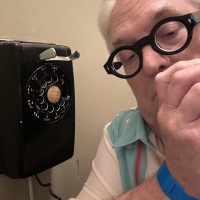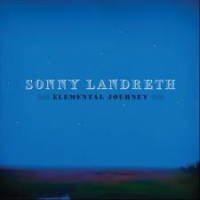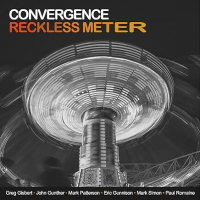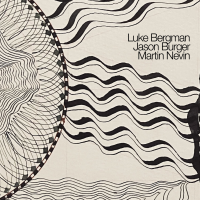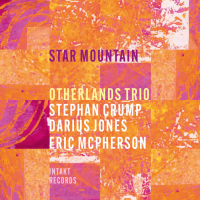Home » Jazz Articles » Extended Analysis » Sonny Landreth: Sonny Landreth: Elemental Journey
Sonny Landreth: Sonny Landreth: Elemental Journey
Elemental Journey
Landfall Records
2012
How did we arrive at the phenomenon that is guitarist Sonny Landreth?
In his autobiography, Father of the Blues: An Autobiography (Da Capo Press, 1969), African American composer W.C. Handy detailed his experience of sleeping on the train platform in Tutwiler, Mississippi, en route to Clarksdale, around 1903. At one point, Handy was awakened from his Delta slumber by:
"a lean, loose-jointed Negro [who] had commenced plucking a guitar beside me while I slept. His clothes were rags; his feet peeped out of his shoes. His face had on it some of the sadness of the ages. As he played, he pressed a knife on the strings in a manner popularised by Hawaiian guitarists who used steel bars. ... The effect was unforgettable. His song, too, struck me instantly... The singer repeated the line ('Goin' where the Southern cross the Dog') three times, accompanying himself on the guitar with the weirdest music I had ever heard."
This is, at once, Handy's famous account of how he first heard that Southern musical genre called "the blues." This account also contains the subtext of Handy hearing this "[pressing] a knife on the strings in a manner popularised by Hawaiian guitarists who used steel bars... the effect was unforgettable." Termed "slide guitar" playing today, what Handy first heard would permeate the whole history of the blues, always being an integral part of the music.
Typically played on a guitar turned to an open chord using some smooth metallic or glass implement (a knife or spoon, the neck of a class bottle or a piece of piping) to slide up and down the fretboard, this method of guitar playing first served a rudimentary supporting role to blues guitarists/singers that would eventually evolve into its own artform. That evolution can be traced from Kentucky native, Sylvster Weaver (1897-1960), who recorded the first slide guitar sides (with Sara Martin on "Longing for Daddy Blues" / "I've Got to Go and Leave My Daddy Behind") for the Okeh Records "race" label in 1923. This acoustic slide guitar evolution continued through Blind Willie Johnson, Blind Willie McTell, Son House, and Robert Johnson, before becoming electrified in Chicago after the Great Migration in the 1940s.
The electric slide guitar was first popularized by Muddy Waters and Elmore James on recordings the pair made for Chicago's Aristocrat Records ("I Can't Be Satisfied," 1948) and Jackson, Mississippi's Trumpet Label ("Dust My Broom," 1951) respectively. Breaking forward two decades and from black to white, Johnny Winter and Duane Allman emerged as technically brilliant and soulful slide guitarists, setting the stage for the modern instrument style. Allman, more than any other guitarist, demonstrated the depth and breadth of the slide guitar and took the style to perfection with "Statesboro Blues" and "One Way Out" on At The Fillmore Deluxe Edition (Capricorn, 1971/2004).
The Allman Brothers Band provided two excellent slide guitar players in Warren Haynes and Derek Trucks, Trucks being technically the most superior and remaining as the only possible peer to one Sonny Landreth as a slide guitarist. The Louisiana-native Landreth first came to the public's attention as John Hiatt's guitarist, appearing on Slow Turning (A&M, 1988), the Tiki Bar is Open (Vanguard, 2001), and Beneath This Gruff Exterior (New West, 2003). He went on to record several well received recordings, the most recent being Grant Street (Sugar Hill Records, 2005) and 2008's From The Reach (Landfall).
All of Landreth's recordings are populated with dazzling slide guitar composition and playing, performed in a variety of odd keys (well beyond the standard G, E, and D) using an advanced playing style that incorporates Landreth's first, second and third fingers playing standard fretting figures while his little finger supports a heavy glass slide. His technique and its development may be compared without hyperbole to that of Eddie Van Halen perfecting the hammer-on, tapping technique of guitar playing for which he is known. Landreth represents the furthest evolution of the slide guitar art. He exists at that creative interface where the cutting edge begins turning in on itself. And that is good as far as it goes.
The danger Landreth faces at this juncture is best illustrated by the presences of guitarists Joe Satriani and Eric Johnson on Elemental Journey, Landreth's first all instrumental recording and eleventh overall. Satriani and Johnson belong to a group of the most technically accomplished guitarists playing, musicians with a wealth of impressive recorded material that is fast, bright, shiny, and cold as Mercury on Pluto. Being a great technician does not equate to being a great artist producing compelling and even important music. Rolling Stones guitarist Keith Richards proved long ago that virtuosity for its own sake is as dead as Nietzsche on the Day the Music Died. And, it is at this doorstep Landreth finds himself.
Landreth's past recordings have all been impressive in spite of singing and lyrics writing far inferior to his technical prowess. His guitar playing has always been stunningly strong and vibrant...that "new" thing that causes the earth to tremble. But many people can only hear and appreciate so much of the same thing bouncing off of the edge of creativity without it becoming boring. This is where guitar playing becomes about the technique itself, divorced from any wider level of appeal. The point being, how many Satriani and Johnson, Steve Vai and Yngwie Malmsteen performances of Jimi Hendrix's "Red House" can you stand before committing mass murder. While Landreth and his technique are not quite there, they are due for arrival.
Elemental Journey is comprised of eleven original Landreath compositions. The disc opens with "Gaia Tribe," an up-tempo piece featuring some aggressive rock drumming recalling both Landreth's "Congo Square" from South of I-10(Praxis/Zoo, 1995) and Fleetwood Mac's "Go Your Own Way." It is a swampy rhythm over which Landreths sinewy slide migrates. "For You and Forever" is a cosmic lullaby featuring strings that can't decide if it is jazz or classical in its affectations. It begins with one of those tried and true complex Landreth heads descending into sing-song. "Heavy Heart Rising" possesses a profound Neil Young minor-key tonality and features Landreth slide at full bore, comfortably clad in soft overdrive, just enough to be dusty, but not dirty. Landreth inserts some clever time changes that mix things up.
Three songs feature guests: "Gaia Tribe" sports guitarist Joe Satriani, while "Passionla" features guitarist Eric Johnson, who manages not to get in the way while Landreth spins his magic. The title tune and "Brave New Girl" brush against ballad territory, allowing Landreth to play more quietly. Landreth's performance is top notch, but now is the time that he depart from his increasing reliance on technique and put that technique to work.
Tracks: Gaia Tribe; For You and Forever; Heavy Heart Rising; Wondertide; Passionola; Letting Go; Elemental Journey; Brave New Girl; Forgotten Story; Reckless Beauty; Opening Sky.
Personnel: Sonny Landreth: guitar; Dave Ranson: bass; Steve Conn: keyboards; Brian Brignac: drums (1, 3, 5, 8, 10), percussion; Doug Belote: drums (2, 4, 6, 7); Mike Burch (9, 11); Tony Daigle: percussion; Lauren Baker: violin; Joel Martinez: violin; Emil Ivanov: viola; Morgan Bartholick: viola; Mark Pritchard: cello; Pedro Huff: cello.
Track Listing
Personnel
Sonny Landreth
guitar, slideAlbum information
Title: Sonny Landreth: Elemental Journey | Year Released: 2012 | Record Label: Landfall Records
Tags
PREVIOUS / NEXT
Sonny Landreth Concerts
Support All About Jazz
 All About Jazz has been a pillar of jazz since 1995, championing it as an art form and, more importantly, supporting the musicians who make it. Our enduring commitment has made "AAJ" one of the most culturally important websites of its kind, read by hundreds of thousands of fans, musicians and industry figures every month.
All About Jazz has been a pillar of jazz since 1995, championing it as an art form and, more importantly, supporting the musicians who make it. Our enduring commitment has made "AAJ" one of the most culturally important websites of its kind, read by hundreds of thousands of fans, musicians and industry figures every month.

